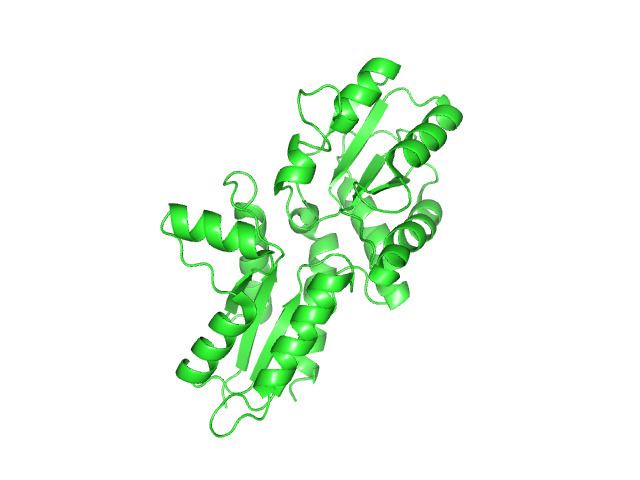EC number 6.6.1.2 ExPASy NiceZyme view | CAS number 81295-49-0 | |
 | ||
Cobalt chelatase (EC 6.6.1.2) is an enzyme that catalyzes the chemical reaction
The 4 substrates of this enzyme are ATP, hydrogenobyrinic acid a,c-diamide, Co2+, and H2O, whereas its 4 products are ADP, phosphate, cob(II)yrinic acid a,c-diamide, and H+.
The aerobic cobalt chelatase (aerobic cobalamin biosynthesis pathway) consists of three subunits, CobT, CobN (InterPro: IPR003672) and CobS (InterPro: IPR006537).
Cobalamin (vitamin B12) can be complexed with metal via the ATP-dependent reactions (aerobic pathway) (e.g., in Pseudomonas denitrificans) or via ATP-independent reactions (anaerobic pathway) (e.g., in Salmonella typhimurium). The corresponding cobalt chelatases are not homologous. However, aerobic cobalt chelatase subunits CobN and CobS are homologous to Mg-chelatase subunits BchH and BchI, respectively. CobT, too, has been found to be remotely related to the third subunit of Mg-chelatase, BchD (involved in bacteriochlorophyll synthesis, e.g., in Rhodobacter capsulatus).
This enzyme belongs to the family of ligases, specifically those forming nitrogen-D-metal bonds in coordination complexes. The systematic name of this enzyme class is hydrogenobyrinic-acid-a,c-diamide:cobalt cobalt-ligase (ADP-forming). Other names in common use include hydrogenobyrinic acid a,c-diamide cobaltochelatase, CobNST, and CobNCobST. This enzyme participates in porphyrin and chlorophyll metabolism.
